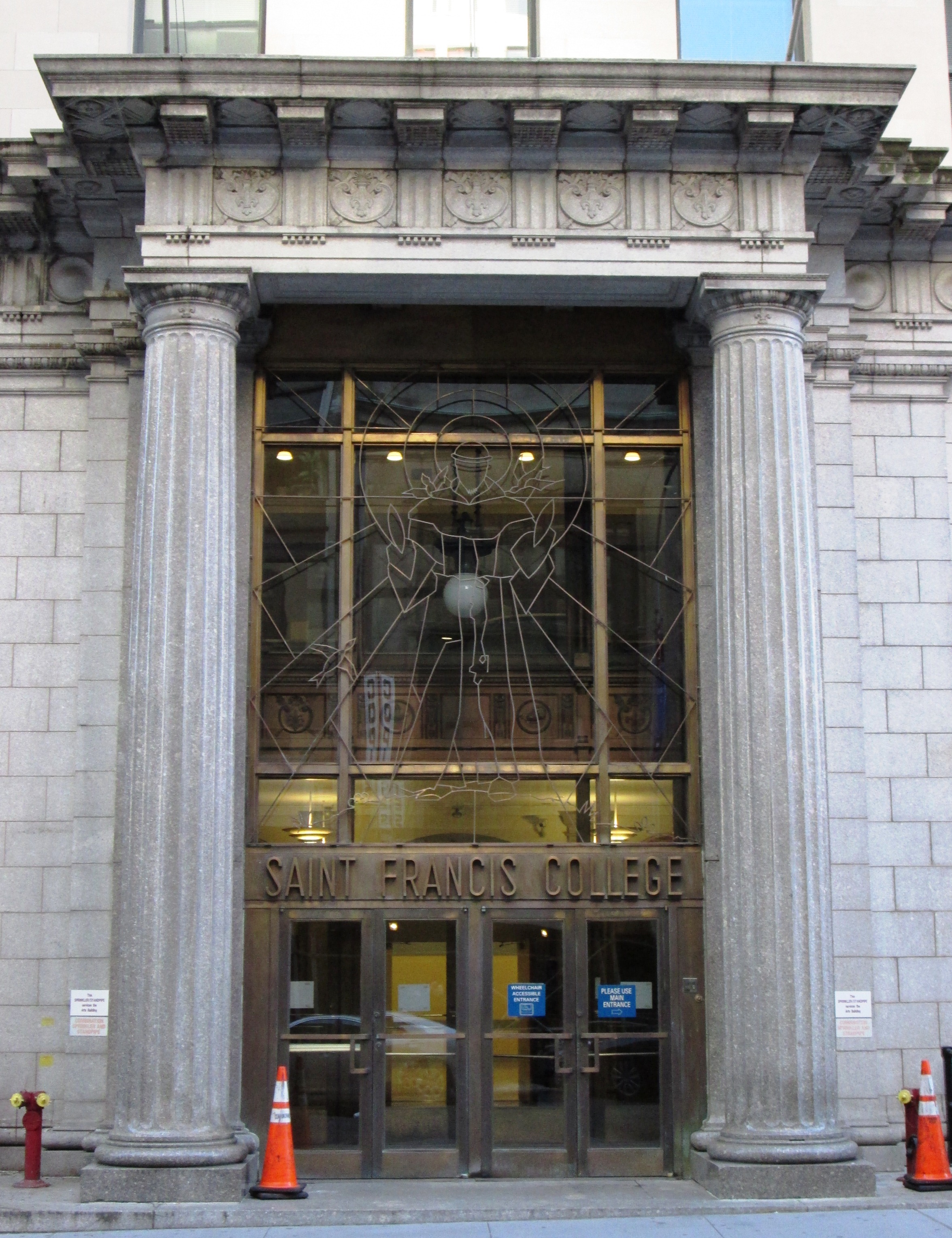Brooklyn Union Gas Company Headquarters on:
[Wikipedia]
[Google]
[Amazon]
The Brooklyn Union Gas Company Headquarters, also known as 180 Remsen Street, and since 1962 the St. Francis College Arts Building, is a historic building in
by Linda Collins, ''Brooklyn Daily Eagle'', February 24, 2009. The Gas Company continued to occupy the building for the next 47 years. In 1962, it was sold and became the St. Francis College Arts Building. In May 2009, the Landmarks Preservation Committee voted in support of designating the building a New York landmark."CB2 Round-up"
The Gas Company continued to occupy the building for the next 47 years. In 1962, it was sold and became the St. Francis College Arts Building. In May 2009, the Landmarks Preservation Committee voted in support of designating the building a New York landmark."CB2 Round-up"
''Brooklyn Daily Eagle'', May 15, 2009. It was approved on May 10, 2011.Brownstoner.com
Brooklyn Heights
Brooklyn Heights is a residential neighborhood within the New York City borough of Brooklyn. The neighborhood is bounded by Old Fulton Street near the Brooklyn Bridge on the north, Cadman Plaza West on the east, Atlantic Avenue on the south, ...
, Brooklyn
Brooklyn () is a borough of New York City, coextensive with Kings County, in the U.S. state of New York. Kings County is the most populous county in the State of New York, and the second-most densely populated county in the United States, be ...
, New York City
New York, often called New York City or NYC, is the most populous city in the United States. With a 2020 population of 8,804,190 distributed over , New York City is also the most densely populated major city in the Un ...
. Designed by Brooklyn architect Frank Freeman and completed in 1914, it was designated a New York City landmark in 2011.
History
TheBrooklyn Union Gas
KeySpan Corporation was the fifth largest distributor of natural gas in the United States. KeySpan was formed in 1998 as a result of the merger of Brooklyn Union Gas Company (founded 1895 by merging several smaller companies) and Long Island Ligh ...
Company was originally established in 1825 as the Brooklyn Gas Light Company, changing its name after a series of mergers in 1895. Rapid growth in the early 1900s prompted the company to establish a new headquarters at 180 Remsen Street. Noted Brooklyn architect Frank Freeman was commissioned to design the new headquarters, which was built in 1914."Former Brooklyn Union Gas Bldg. Considered for Landmarking"by Linda Collins, ''Brooklyn Daily Eagle'', February 24, 2009.
 The Gas Company continued to occupy the building for the next 47 years. In 1962, it was sold and became the St. Francis College Arts Building. In May 2009, the Landmarks Preservation Committee voted in support of designating the building a New York landmark."CB2 Round-up"
The Gas Company continued to occupy the building for the next 47 years. In 1962, it was sold and became the St. Francis College Arts Building. In May 2009, the Landmarks Preservation Committee voted in support of designating the building a New York landmark."CB2 Round-up"''Brooklyn Daily Eagle'', May 15, 2009. It was approved on May 10, 2011.
Description
Although architect Frank Freeman is best known for his work in the Richardsonian Romanesque style, the Brooklyn Union Gas Company Building was completed during his later, Neoclassical period, and is more restrained than his earlier work. The eight-story building is divided into three sections. The ground floor, constructed ofgranite
Granite () is a coarse-grained ( phaneritic) intrusive igneous rock composed mostly of quartz, alkali feldspar, and plagioclase. It forms from magma with a high content of silica and alkali metal oxides that slowly cools and solidifies under ...
, consists of a large central entranceway flanked by a pair of large windows on either side. Above the entrance is a shallow portico supported on two Roman Doric columns, above which is a heavy, decorated cornice running the width of the building. The next four floors are of a very simple design, consisting of four rows of unadorned rectangular windows surmounted by a plain cornice. The final two floors consist of two more rows of windows, spaced by a series of six Ionic columns rising to an entablature and, at the top of the building, a heavy stone cornice. The structure as a whole has been characterized as "a fine, stately office building demonstrating Freeman's infinite versatility."Morrone and Iska, p. 141.
The '' AIA Guide to New York City'' says of the building that it is one of Freeman's "lesser work . p.592
References
Notes Bibliography * Morrone, Francis; Iska, James (2001): ''An Architectural Guidebook to Brooklyn'', Gibbs Smith, . * ''Architecture and Building - A Magazine Devoted To Contemporary Architectural Construction - Volume 46'', originally published in 1914, reprinted in 2009 by Dick Press, .External links
* {{commonscat-inline Frank Freeman buildings Buildings and structures completed in 1914 St. Francis College New York City Designated Landmarks in Brooklyn Buildings and structures in Brooklyn 1914 establishments in New York City Brooklyn Heights